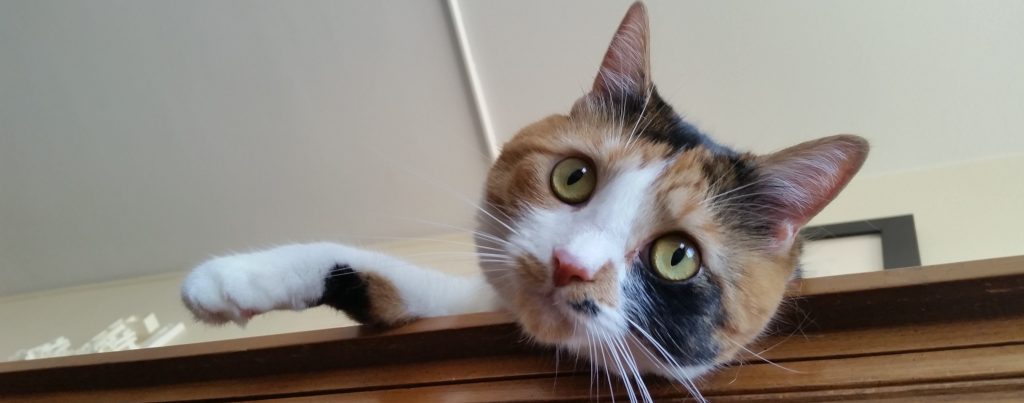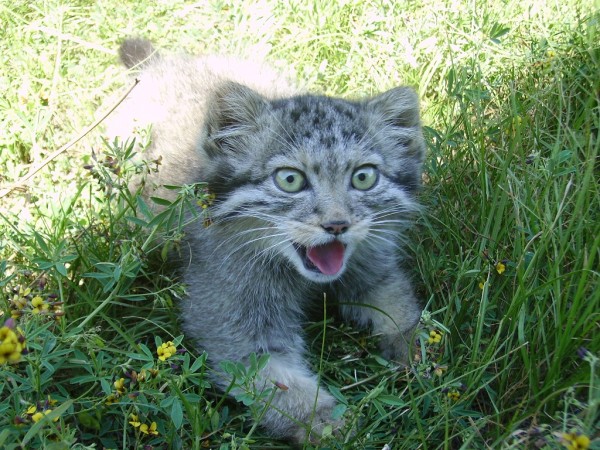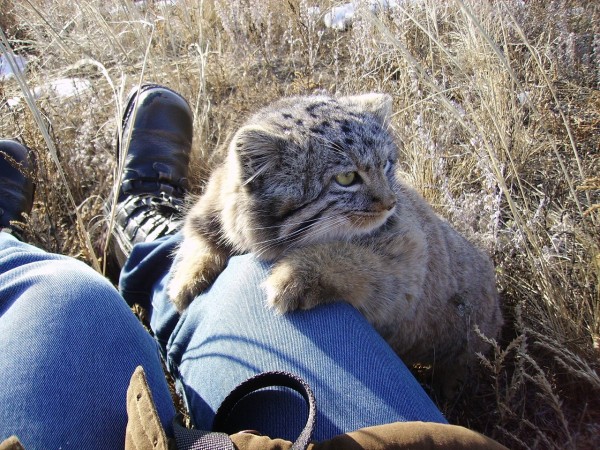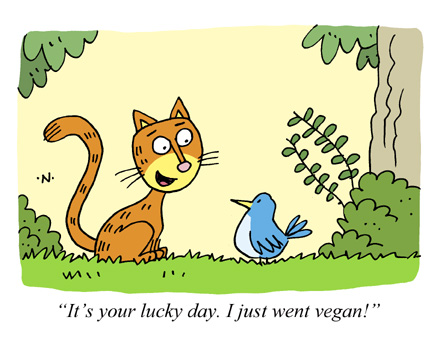Lynn Baer, DVM, Cat Specialist, shares her top tips for cat owners to ensure well adjusted, happy cats. Lynn says, “happy cats are healthy cats and happy cats make owners happier and healthier, too”.
Tip #1) Recognize the fact that indoor only cats have no choices of their own in life.
They are completely reliant on what we offer them. We choose their litter box size, shape, location and litter substrate. We choose where they are fed, what they are fed out of, and what foods they are offered. We choose their toys, their beds, their bowls, and everything within their lives. Cats have few choices of their own. They would be happier given more choices of their own and once owners understand that and begin to expand their options, cats would remain healthier and happier.
Tip #2) Bring the outdoors in
Cats are held captive within four walls for their entire lives. Open the blinds, open the windows, grow grass, bring leaves and branches in for them to smell. Again for owners to be more aware of the fact that their cats have never walked on grass or soil, experienced changes in temperature, smelled different smells, or had the ability to walk around the block to explore new surroundings. Owners should evaluate every opportunity to enhance their indoors cat’s lives by bringing new things into the home. Build catios, window units or other alternative opportunities for cats to experience the outdoors. At a minimum place window seats around the house (off the ground), build vertical spaces for them to climb, train them to walk on leashes, erect cat proof fences, etc.
Tip #3) Play, play, play and more play
Indoor cats are bored, depressed and inactive. Owners don’t generally play with their cats daily. Cats need exercise, mental stimulation and fun. Having a basket of toys for cats is not enough. Owners should actively engage with their pets by using wand toys, laser lights, throwing blankets over furniture to create tents, rotating toys daily. Adding silvervine, catnip, and valerian to their arsenal of toys will give cats new experiences. Using foraging toys for food rewards, making cats hunt for some of their food all help to stimulate their body and mind.
Tip #4) Lots of scratch posts – both vertical and horizontal for cats to scratch on.
I am completely opposed to declawing (having never performed one in my entire career). Scratching is a form of communication and also gives cats the ability to stretch their muscles. It is important they have great areas and substrates to scratch on. It makes them happy.
Tip #5) Seek out cat only veterinarians
Don’t allow a veterinarian who declaws to treat your cat. Take your cat to a vet at least once a year for a good physical exam and blood work. Cats are notorious for hiding pain and illness and if an owner thinks their cat is sick, they are likely very sick. Pay attention to any changes (no matter how small) and seek veterinary care immediately. Age is not a disease and many owners ignore signs of illness as due to advanced aging. That is not in a cat’s best interest. Owners need to advocate on behalf of their pets and insure good medical care. Seek second opinions. Good veterinarians encourage owners to do so and are never offended by it.
Tip #6) Cats need wet food more than dry
Wet food is lower in calories and higher in protein and moisture. It is extremely important to feed cats at least 5-6 times daily. Don’t feed one brand or diet only. Variety is the spice of life and cats are used to eating birds, squirrels, rats, mice, chipmunks, bugs, etc. One diet or one brand is not normal. Either is feeding once or twice a day.
Source: The Purrington Post
Editors Note: Find many of the toys, scratchers, outdoor enclosures and cat furniture mentioned in this article right here.






